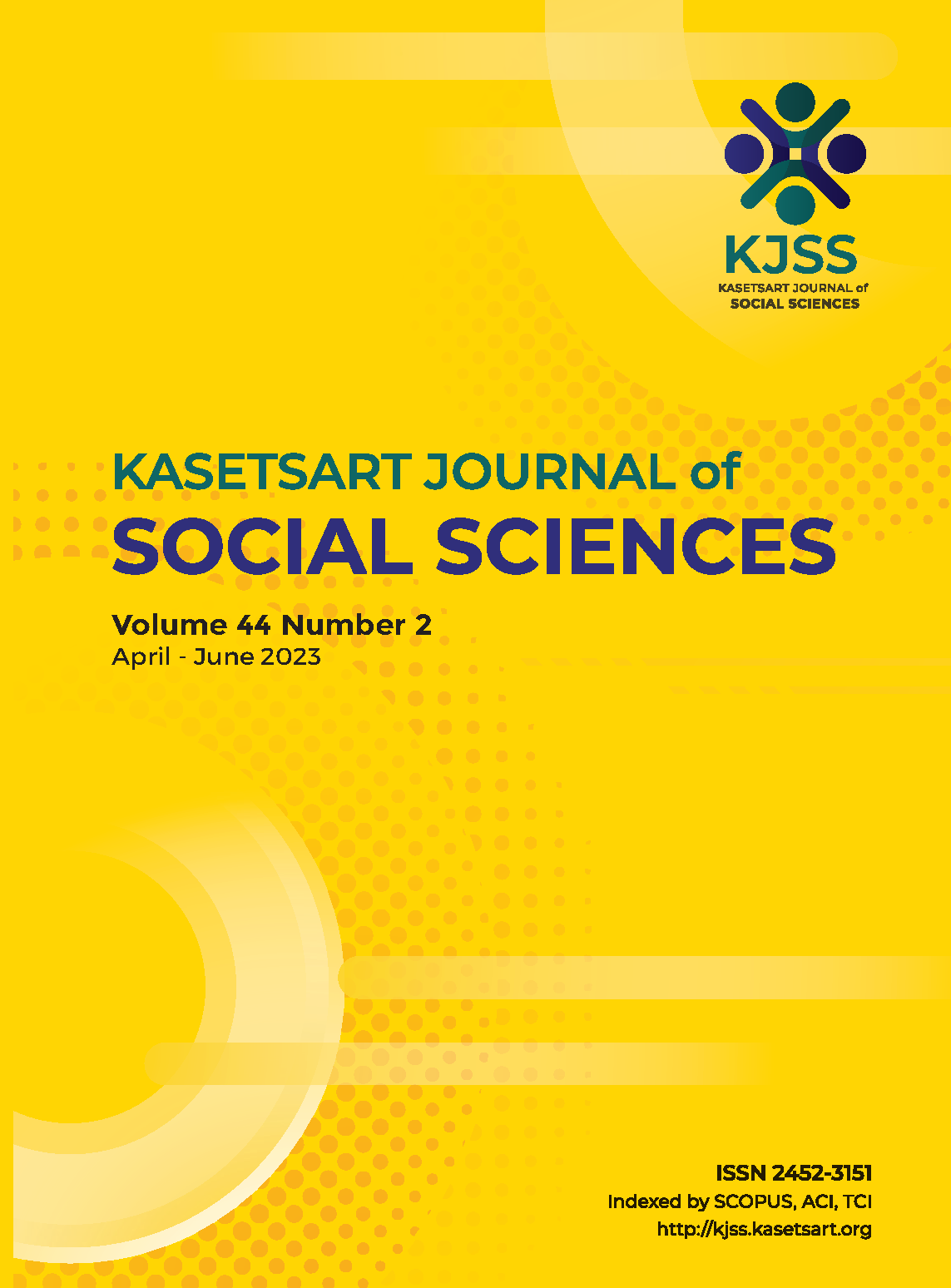Urbanization and farmer adaptation in the Bangkok Suburban area
Keywords:
Bangkok, collaboration, community, farmers’ adaptation, Suburban areaAbstract
This article examines how urbanization contributes to the variation of farmers’ adaptation in Southeast Asia. The variation of farmers’ adaptation to urbanization results from urban expansion transforming local communities’ environment and social structure. The patterns of farmers’ adaptation can be categorized into the following: (1) reducing their production capacity; (2) establishing local groups to mobilize resources and manpower; and (3) changing their mode of production to other products and services. In addition, if urban expansion weakens local networks or participation from local communities, farmers hardly ever adapt themselves to new production modes or services. On the other hand, if urban expansion contributes to opportunities for farmers to collaborate with outside markets or external actors, the farmers can, to some extent, adapt their mode of production. The implication from this paper contributes to how policymakers can facilitate collaborative food governance system serving for specific needs of farmers, in particular peri-urban areas, and encourage positive environment between urban communities and farmers in peri-urban areas.
Downloads
Published
How to Cite
Issue
Section
License

This work is licensed under a Creative Commons Attribution-NonCommercial-NoDerivatives 4.0 International License.
This is an open access article under the CC BY-NC-ND license http://creativecommons.org/licenses/by-nc-nd/4.0/










